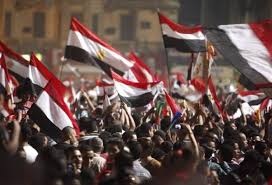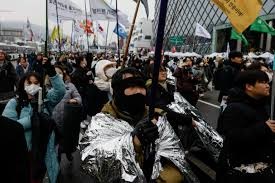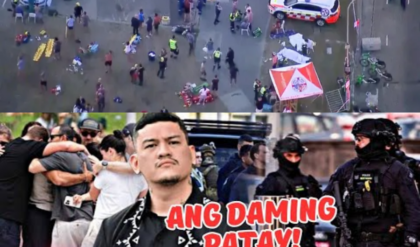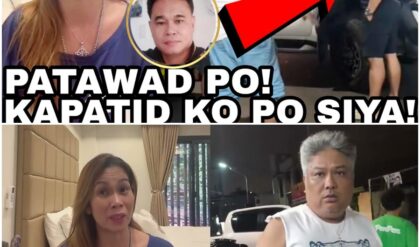The recent turmoil in Peru, following the rapid succession of presidential ousters and appointments, has culminated in a tragic escalation of public demonstrations. The country is on the brink of a state of emergency after widespread protests against the new, week-old government of President José Jerí resulted in at least one death and numerous injuries among demonstrators and police.
The protests, fueled by public anger over a prolonged crime crisis and deep-seated political corruption, signal significant instability for Jerí’s nascent administration. The government’s immediate response is to declare a state of emergency in the capital, Lima, and grant the new president expanded powers to legislate on public safety.

Protests Erupt After Presidential Ouster
The immediate trigger for the latest wave of nationwide protests was the dramatic, midnight ouster of former president Dina Boluarte just last Thursday. Boluarte, who had faced immense unpopularity (with approval ratings hovering between 2% and 4% before her removal) and protests that resulted in dozens of deaths after she assumed power in late 2022, was removed amid the ongoing public outcry over corruption and rising insecurity.
The demonstrations on Wednesday night, which drew thousands of participants across the country, were organized by a diverse coalition, including Gen Z protesters, transport workers, and various civil groups. In Lima, hundreds of protesters converged outside the congress building, a symbolic site of the nation’s political turmoil.
Violence Outside Congress
The situation outside congress quickly devolved into violence as protesters attempted to tear down the metal barriers protecting the building. Police responded with teargas, while some demonstrators retaliated by hurling fireworks, rocks, and burning objects at law enforcement.
The central demand of the demonstrators was captured in their chants of “Everyone must go!”, reflecting a profound lack of faith not only in the executive branch but also in the legislative body. Notably, the Congress—which Jerí headed immediately prior to becoming president—holds a single-digit approval rating, making it almost as unpopular as the ousted Boluarte.
Fatalities and Injuries Confirmed
The protest tragically claimed the life of one demonstrator, Eduardo Mauricio Ruiz, a 32-year-old man. Fernando Losada, a representative from the country’s ombudsman’s office, confirmed the death, and Peru’s prosecutor’s office later stated Ruiz died after being shot.
The clashes also left dozens injured: the interior ministry reported that 89 police officers and 22 civilians were wounded, with 11 individuals detained during the unrest.
Government Response: State of Emergency and Power Grab
In response to the chaos and the confirmed fatality, the government moved swiftly to assert control and promised an aggressive approach to public safety.
State of Emergency in Lima
Prime Minister Ernesto Alvarez announced late on Thursday that the government would declare a state of emergency in Lima within hours. This measure typically grants the government expanded powers, including the deployment of the military, and restricts certain civil liberties such as freedom of assembly and movement. Alvarez indicated this declaration would precede a larger “package of measures to tackle rising insecurity.”

Jerí Seeks Legislative Authority
President Jerí, who took office only days ago, addressed the crisis by expressing regret over Ruiz’s death, promising an “objectively” investigated inquiry via a post on X. However, he quickly deflected blame for the violence, stating it was caused by “delinquents who infiltrated a peaceful demonstration to sow chaos.” He vowed the “full force of the law will be on them.”
Following a meeting at congress, Jerí announced his intention to ask the unicameral congress for “authority to legislate on public safety issues.” He specifically mentioned prison reform as one area of focus, though he did not immediately elaborate on the extent of the expanded legislative powers he sought.
Interior Minister Vicente Tiburcio, speaking before congress shortly after Jerí, signaled the administration’s focus on the security sector, promising to push for a comprehensive reform of the national police.
The Bellwether for a Nascent Presidency
The protests serve as a critical bellwether for the future of President Jerí’s nascent and short-lived presidency, which is scheduled to end with elections next July.
Jerí, 38, assumed power facing immediate challenges:
Public Priority: He has promised to make the crime crisis his top priority, aligning with the public’s primary grievance.
Political Scrutiny: Despite his promise, Jerí himself has been the subject of past controversies, including corruption allegations and a now-shelved investigation for sexual assault. He has consistently denied all wrongdoing and expressed a willingness to cooperate with any corruption probe.
The violent protests and the immediate declaration of a state of emergency underscore the immense difficulty Jerí faces in unifying a deeply polarized and frustrated Peruvian public. His need to seek expanded legislative powers so early in his term suggests the government believes extraordinary measures are required to prevent the security and political crises from completely undermining his tenure.





